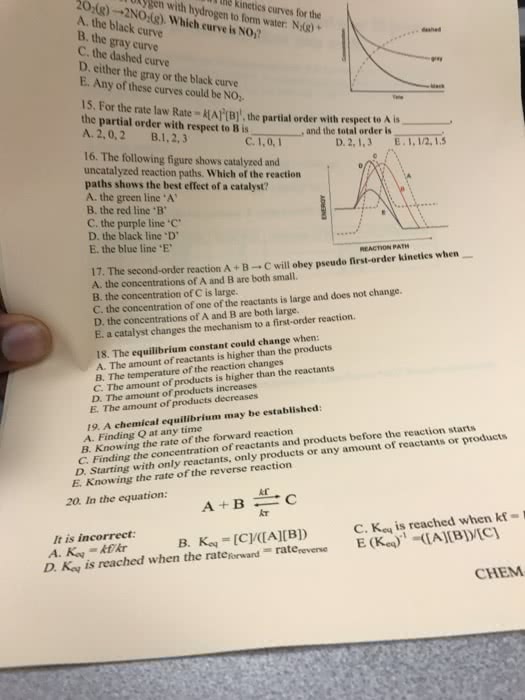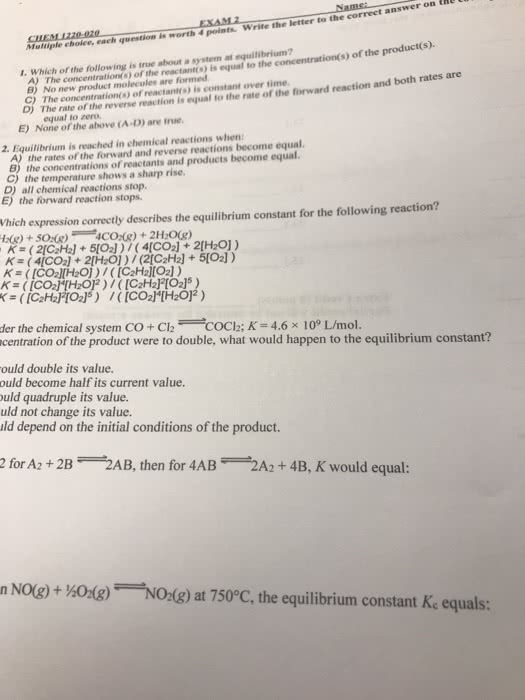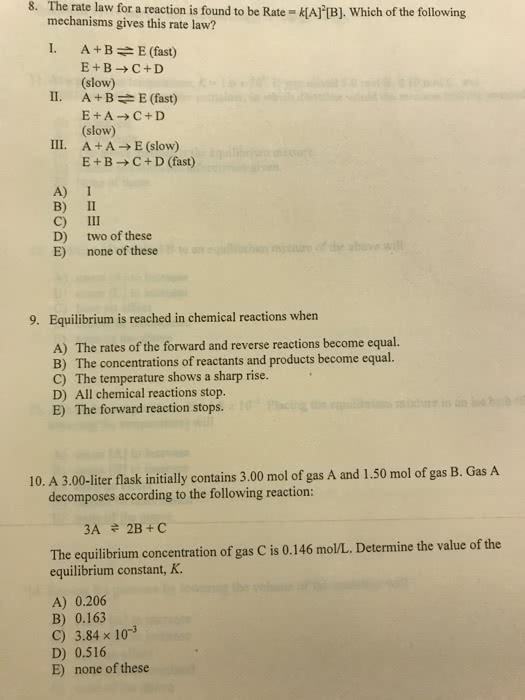CHE-1102 Lecture Notes - Lecture 5: Equilibrium Constant, Rice Chart, Phosgene
Document Summary
Two opposing reactions occur simultaneously at the same rate. When the rate d e is equal to rate e d, the condition of equilibrium has been established. The same equilibrium is reached whether we start with only reactants or with products. When a process is at equilibrium, it has been found experimentally, for all processes, that the ratio of products to reactants is constant. Kc = for [ ] in molar, m. Kp = for [ ] in partial pressure in atm for gases. The equilibrium expression for this reaction would be: For the forward reaction n2o4 2no2 , the rate law is rate = kf[n2o4] For the reverse reaction 2no2 n2o4 , the rate law is rate = kr[no2]2. Rewriting this, it becomes the mass action expression for the equilibrium constant, keq. Keq = kf / kr = [no2]2 / [n2o4] At equilibrium, the following [ ]"s are found: By convention, equilibrium constants, kc , are always unitless.




